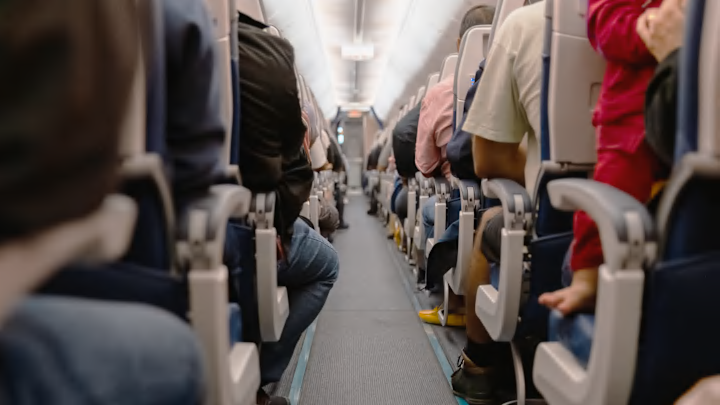When news of the Titanic disaster first broke in 1912, the International Herald Tribune reported that “of the...souls on board the great ship, only 675, mostly women and children, have been saved.” (The actual number of survivors was 705.) When United Airlines Flight 232 suffered a loss of hydraulic fluid in 1989, the pilot and an air traffic controller exchanged information about the number of “souls on board”—296 in all, 111 of them perishing.
When commercial travel casualties are either imminent or being reported, spokespeople and media members will often call the deceased “souls,” or “souls on board.” So will air traffic controllers and pilots when inquiring about those present on a plane encountering a high-risk situation. It can even be heard in relation to space travel. When the Columbia exploded in 2003, New York Mayor Michael Bloomberg said that “The loss of the space shuttle Columbia and the seven souls on board is a startling reminder of the perils of space travel and the bravery and courage of our astronauts.”
So why do professionals refer to travelers as souls instead of passengers?
The Origin of Referring to Passengers as Souls
According to the National Air Traffic Controllers Association (NATCA), there is no official mandate by the Federal Aviation Administration (FAA) or in air traffic control guidance that requires aviation professionals to refer to passengers as souls. It is, however, something that air traffic controllers appear to use as part of their informal shorthand. A 1948 manual for air traffic controllers noted that “souls on board” was more traditional in nature than anything formal; the term can also be found periodically in official FAA documents.
“That term ‘souls on board’ doesn’t ring a bell insofar as the [Air Traffic Control Manual] is concerned,” retired controller Rod Peterson was quoted as saying by the NATCA in 2016. “However, it was something I learned ‘by legend’ in my air traffic control development.”
The phrase has been around a long time. Naval authorities used it at least as far back as the 1800s. In 1848, for example, the Ocean Monarch of Boston was downed by fire. Its captain noted in a statement to media that there were “380 souls on board,” with 229 surviving the catastrophe.
Using souls to describe ship occupants was probably reinforced by popular culture: A 1937 film starring Gary Cooper was titled Souls on Board. The phrase eventually migrated to aviation in the 20th century, a result of shared lexicon between the industries. While soul is a synonym for individual, that’s not the only reason why the terminology persisted.

Why We Refer to Passengers as Souls
Soliciting the number of souls on board is usually an alarming sign: It means air traffic control is looking to confirm the number of people that might need to be rescued or recovered in the event of an aviation mishap.
There are a few pragmatic reasons aviation professionals use souls in communication about passengers. Citing the number of passengers is distinct from the total number of occupants on a plane, which includes the pilots, flight attendants, other crew, and even airline professionals who might be jumping on in an unofficial capacity. When communicating with a pilot, asking about the number of souls has brevity: Asking about the total number of people on board, including travelers and crew, does not.
It also avoids confusion when referencing the number of seats aboard an aircraft. While a seat is normally occupied by a person, it might also be taken by a companion animal or some kind of inanimate object like a musical instrument. (Some people also buy a second seat for additional room.)
As a colloquial term, souls may also have become tradition owing to the gravity implied by the phrase. Air traffic controllers, pilots, and ship captains have a sobering responsibility in keeping people safe. Invoking souls may be a reminder of that obligation, and a likely reason that even though it’s not an official edict, it continues to be part of an oral tradition.
Get Answers to More Big Questions:
